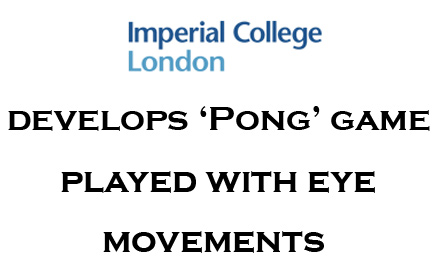Gamers who’ve been boasting about their motor skills when it comes to using their hands while playing may soon get a chance to test their eye muscles for gaming, though it’s the physically disabled that a group of students from Imperial College London have kept mind for their newest development. The students have devised a PC game dubbed ‘Pong’ that allows players to control a bat with eye movements in order to hit a ball.

“Remarkably, our undergraduates have created this piece of neurotechnology using bits of kit that you can buy in a shop, such as webcams. The game that they’ve developed is quite simple, but we think it has enormous potential, particularly because it doesn’t need lots of expensive equipment. We hope to eventually make the technology available online so anyone can have a go at creating new applications and games with it and we’re optimistic about where this might lead. We hope it could ultimately provide entertainment options for people who have very little movement. In the future, people might be able to blink to turn pages in an electronic book, or switch on their favorite song, with the roll of an eye,” explained Dr.Aldo Faisal, the team’s supervisor from Department of Computing and the Department of Bioengineering, Imperial College London.
In this open source game, players are required to manipulate a bat to hit a ball as it bounces around the display. The player utilizes glasses containing infrared light that has been designed explicitly for this purpose. A webcam is set up to capture the movement of one eye. A computer program on the laptop to which the webcam is linked syncs the player’s eye movements to the game. This technique needs to be refined further so that the movements in both eyes can be monitored. More complicated tasks like plotting a journey on screen can thus be executed by the user. Apart from gaming, this new technology may also be implemented in steering motorized wheelchairs or PC cursors with the eyes.
Ian Beer, third year undergraduate from the Department of Computing, Imperial College London, added, “This game is just an early prototype, but we’re really excited that from our student project we’ve managed to come up with something that could ultimately help people who have really limited movement. It would be fantastic to see lots of people across the world creating new games and applications using our software.”
The technology is relatively inexpensive as compared to contemporary eye movement systems since it uses off-the-shelf hardware and costs just around £25 (approx. Rs.1,686) to build. As the researchers themselves point out, it seems to promise a lot of potential in the development of more refined games and applications.

